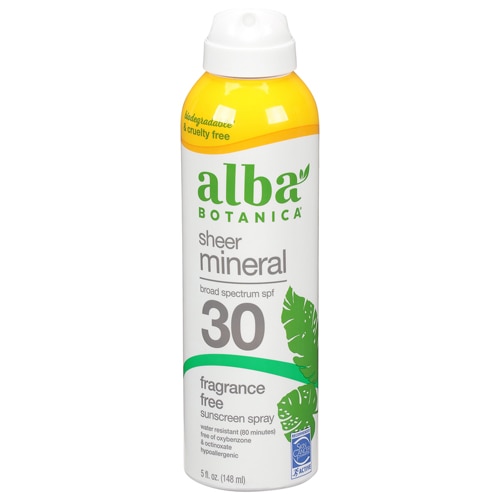A recent study found that four active ingredients in over-the-counter sunscreens seeped into users’ bloodstreams merely one day after the sunscreen was applied. But healthcare experts say that that isn’t cause for alarm, and that people should continue to protect themselves with sunscreen.
In a 2018 pilot study involving 24 adult volunteers, researchers discovered the presence of the four sunscreen chemicals — avobenzone, oxybenzone, octocrylene and ecamsule — in the bloodstreams of volunteers. The researchers noted that the levels of absorption for all four chemicals were “substantially higher” than the threshold currently proposed by the U.S. Food and Drug Administration (FDA) — 0.5 ng/mL (nanograms per milliliter). The study, done by FDA researchers, was published in May 2019 in the Journal of the American Medical Association.
The study’s authors cautioned, however, that absorption of a sunscreen ingredient through the skin and into the body doesn’t make the ingredient unsafe. In fact, the Skin Cancer Foundation says it’s long been believed that a certain amount of chemical ingredients in sunscreens might be absorbed by the body and then naturally excreted.
Authors of the FDA study say further testing must be conducted to determine whether the four ingredients in question are safe for repeated use. In the study, users applied 1 ounce of sunscreen every two hours while they were in the sun over the course of four days.
“No one knows what these chemicals can do to our health when in the blood, because no one has studied that yet,” says Dr. Viseslav Tonkovic-Capin, a board-certified dermatologist who practices in the Kansas City area and is editor of DermBoard.org.
Indeed, the nonprofit Environmental Working Group is particularly skeptical of oxybenzone, a common sunscreen ingredient that it says poses health and environmental hazards. About two-thirds of chemical sunscreens tested by the group contain oxybenzone — an ingredient that the nonprofit wants manufacturers to stop including in their products.
Fearing that they might cause health problems, the FDA is in the process of rounding up safety data about 12 active ingredients in sunscreens marketed in the U.S., including oxybenzone and the three other ingredients examined in the study.
“We want to ensure that consumers continue to have confidence in the safety of the products that they trust and have used every day for years,” Alexandra Kowcz, chief scientist at the Personal Care Products Council, which represents sunscreen manufacturers, says in a statement. “We look forward to our continued work with the FDA to ensure that consumers have access to products containing a broad variety of sunscreen active ingredients.”
As we await more research about sunscreen ingredients, healthcare professionals advise people to continue using sunscreen to prevent skin cancer and other skin damage. If you’re uncomfortable applying sunscreens that contain chemical ingredients, experts offer these tips to protect yourself from the sun’s harmful rays:
Sunscreen Safety Tips
- Use mineral sunscreens with natural ingredients like titanium oxide and zinc oxide. No matter what type of sunscreen you apply, it should provide an SPF of at least 30, according to the American Academy of Dermatology. However, products with titanium dioxide and zinc oxide as the main ingredients might not be as effective as other sunscreens, the Skin Cancer Foundation says.
- When you’re outdoors, spend as much time in the shade as possible.
- Avoid direct sunlight from 10 a.m. to 4 p.m., when the sun’s rays are most intense.
- Wear a wide-brimmed hat and UV-ray-blocking sunglasses when you’re outside, as well as a long-sleeve shirt and pants.
“While we should not be hermits or restrict our lifestyles, we should practice good sun protection and teach our children to do the same,” says Dr. Inessa Fishman, a facial plastic and reconstructive surgeon in the Atlanta area.




